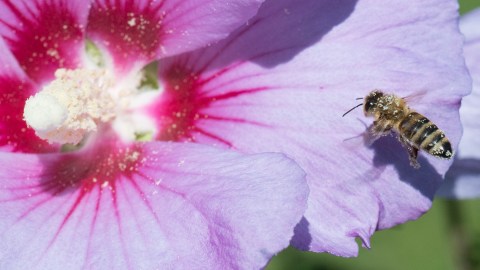Why is there a higher suicide rate in the spring?

Thanks to heightened public awareness of seasonal affective disorder, conventional wisdom now says that most suicides occur during the cold, dark months of winter, but that’s wrong — it’s actually the warmer months. It’s a serious problem, too: In the U.S. in 2015, for example, the CDC reports there were 44,193 suicides, or 13.7 for every thousand people. It’s been suggested that seasonal depression might have to to do with springtime taxes, but something more biological might be the cause. It could be pollen.
It would be understandable that paying one’s taxes could drive a person over the edge. According to statistics from 2017, the average American household is $137,063 in debt, a scary number made even more so with the realization that the average family income is only $59,039. This tax bill is low compared to other developed nations, by the way: A U.S. couple with two kids pays about 20.1% of their gross income, while in Belgium it’s nearly double that, at 37.8%. It needs to be said, however, that countries with higher taxes tend to have government-provided universal healthcare and other services that reduce citizens’ year-round expenses. And anyway, suicides actually peak beyond tax season, in July.

Inflammation may be the key
There’s a fair amount of research that links inflammation to depression. A 2016 study found that “Major depressive disorder may be due to psychoneuroimmunological dysfunction, as studies have documented increased levels of a variety of inflammatory mediators in depressed subjects.” This was a large study of 14,275 people, and the scientists found that 46% of those self-reporting as depressed had an increased amount of C-reactive protein (CRP), a marker for inflammation. Another study linked inflammatory cytokines to depression. As Marlynn Wei writing for Psychology Today puts it, “The theory that depression may be viewed as a psychoneuroimmunological disorder can also help explain why efforts to reduce chronic inflammation in the body also improves and helps prevent depression.”

It’s a pollen time of year
One factor that’s certainly, um, in the air in spring and summers is tree pollen. Olga Khazan in The Atlantic reports on a study done in Denmark that found suicides going up by 13.2% when pollen was present. Japanese researchers also found that female suicides spiked in the presence of pollen. Another study considers pollen as a suicide trigger due to its production of “seasonally increased cytokine production in upper airways.” It also notes that experiments with rodents show the administering of tree pollen caused “behavioral alterations consisting of increased anxiety and disturbed social interaction.” Maybe the most convincing evidence cited in the study is this: “Finally, victims of suicide have an increased level of gene expression of allergy-related cytokines in the orbitofrontal cortex, a region of the brain manifesting histopathological abnormalities in suicide victims.”
Pollen: It’s not just for sniffles
More study is required to fully solidify the link between pollen, mood disorders, and suicide, but it makes sense: Pollen leads to inflammation which leads to depression. It’s difficult to imagine exactly what could be done to reduce exposure to pollen — other than staying inside — without disturbing its role in the germination of plants and crops. Inflammation, though, is something that can be treated, and confirming its role as a suicide trigger could mean a whole new way of helping.
—





